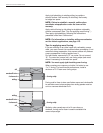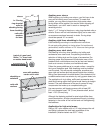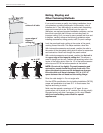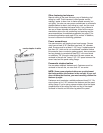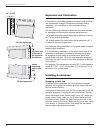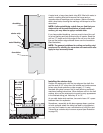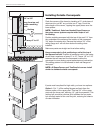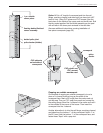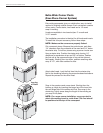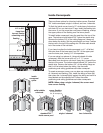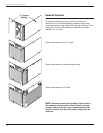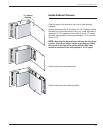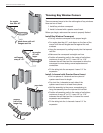
A water level, a long clear plastic tube 90% filled with water, is
useful in marking level points around the house and on
opposite sides of openings such as doors. Water will always
seek a level state, ensuring the markings will always be at the
same level.
NOTE: If after establishing a chalk line you find that your
starter strip will be positioned below an easily nailed
surface, you may have to apply a nailable base.
If you have added sheathing, you may want to bend trim coil
to act as flashing and help prevent entry of insects. Bend the
coil in a “Z” shape so the top edge of the coil is on the chalk
line and the bottom edge extends down over the foundation.
(See illustration.)
NOTE: The general guidelines for cutting and nailing vinyl
panels and for allowing for expansion and contraction also
apply to vinyl accessory items.
Installing the starter strip
Position the starter strip with the top edge on the chalk line
and the ends 6-1/2" away from the outside and inside corners
(when using lineal systems or wide corners), 4" if using
standard one-piece corners. Nail to wall following previously
mentioned nailing instructions. When hollows occur in the wall
surface, shim out the starter strip to avoid a wavy appearance
in the finished siding job. Nail every 8" to 10".
As you add starter strip sections, be sure to leave 1/4" space
between them for expansion.
Sometimes – especially at sills above garage doors, porches
or brick surfaces where the siding has been cut lengthwise –
you may find it easier to use a combination of utility trim and
J-channel as a starter strip to secure a panel (see illustration
on page 22).
sheathing
starter strip
metal flashing
foundation
6-1/2"
for wide
corners
& lineals
4" for
standard
corners
chalk
line
8"-10"
27
Wolverine Fit and Finish Installation Guide






